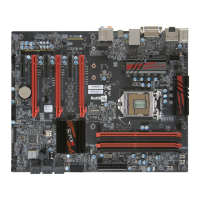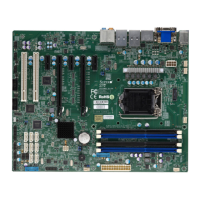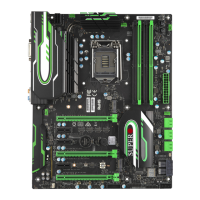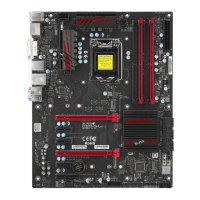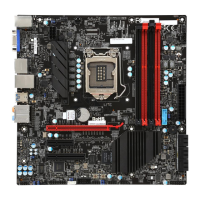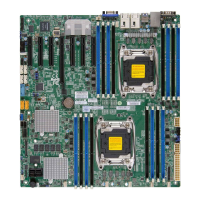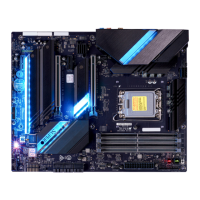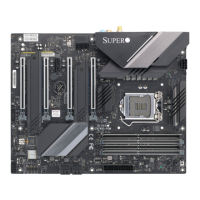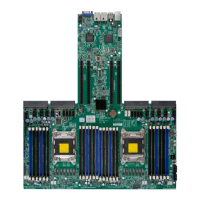Do you have a question about the Supermicro C7Z170-OCE and is the answer not in the manual?
Outlines the structure of the user manual, detailing its chapters and appendices.
Lists the items included in the retail box with the motherboard.
Explains the symbols and conventions used within the manual for clarity.
Provides warnings and instructions for safe handling and disposal of batteries.
Outlines guidelines and legal requirements for the proper disposal of the product.
Provides contact details for Supermicro's main headquarters.
Lists contact details for Supermicro's Europe and Asia-Pacific offices.
Provides links to download necessary drivers, utilities, and the user's manual.
Offers contact information for the support team for any questions.
Illustrates the physical layout of components, headers, and ports on the motherboard.
Provides a block diagram showing the interconnections of major motherboard components.
A quick reference table for jumper settings and their default configurations.
Provides a general overview of the C7Z170-OCE motherboard and its capabilities.
Details the features and specifications of the Intel Z170 Express Chipset.
Lists and describes the key hardware features of the motherboard, including CPU, Memory, and I/O.
Highlights special features like Recovery from AC Power Loss and PC Health Monitoring.
Explains the Advanced Configuration and Power Interface (ACPI) features for power management.
Covers power supply requirements and Super I/O functionality for system operation.
Lists the necessary components and tools required for installing the motherboard.
Provides precautions for handling static-sensitive electronic components to prevent damage.
Detailed steps for installing the CPU and its heatsink securely and correctly.
Instructions for safely removing the CPU heatsink without damaging components.
Guides on how to properly install DDR4 memory modules into the motherboard slots.
Instructions on how to physically mount the motherboard into the computer chassis.
Identifies and describes the various onboard connectors and I/O ports on the motherboard.
Details the pin definitions and connections for the front panel controls and indicators.
Explains how to connect various cables to onboard headers like power, fans, and buzzer.
Describes the function and configuration of various jumpers on the motherboard.
Explains the meaning of onboard LEDs and displays for system status and diagnostics.
Details the SATA ports, their configurations, and pin definitions for data transfer.
Provides systematic procedures to diagnose and resolve common system issues.
Outlines steps to take before contacting technical support and what information to provide.
Addresses common questions and provides answers related to BIOS, memory, and system setup.
Instructions for safely removing and installing the motherboard battery for CMOS reset.
Explains the warranty service process, including obtaining an RMA number and returning the product.
Introduces the AMI BIOS setup utility, its navigation, and basic operation.
Details the information displayed in the System Information panel, including hardware configuration.
Configures CPU-related options such as type, speed, cache, and virtualization settings.
Options for configuring memory frequency, timings, profiles, and voltage for optimal performance.
Covers advanced boot features, power management, and other system configurations.
Configuration settings for the Super I/O chip, including serial port settings.
Settings for enabling console redirection via serial ports for remote system management.
Configuration options related to the System Agent (SA), including PCIe and GMM settings.
Options for configuring integrated and external graphics, display output, and memory allocation.
Settings for SATA controllers, modes (AHCI/RAID), and drive features like hot-plugging.
Configuration related to the PCH Firmware, including ME firmware updates.
Options for managing USB support, legacy devices, and USB host controllers.
Settings for PCI Express slots, option ROM execution, and Plug and Play configurations.
Options for setting administrator and user passwords to protect BIOS access.
Settings to configure Secure Boot modes, CSM support, and manage platform keys.
Options for managing cryptographic keys for secure boot processes.
Controls fan speed based on system and CPU temperatures for optimal cooling.
Options for saving changes, exiting BIOS, restoring defaults, and managing boot order.
Instructions and procedures for updating the system BIOS using the SuperFlash utility.
A table listing BIOS error beep codes, their messages, and descriptions for system troubleshooting.
Guide on installing necessary drivers and software programs after OS installation.
Instructions for setting up and using SuperDoctor 5 for system monitoring and management.
Explains the Unified Extensible Firmware Interface (UEFI) specification and its role in system boot.
Describes how to recover the main BIOS image using a USB-attached device if corrupted.
Introduces the Dual Boot Block feature as a last-ditch mechanism for BIOS boot block recovery.
Provides step-by-step instructions to reboot the system using the JBR1 switch for recovery.
| Form Factor | ATX |
|---|---|
| CPU Socket | LGA 1151 |
| Chipset | Intel Z170 |
| Memory Slots | 4 |
| Maximum Memory | 64 GB |
| SATA | 6 x SATA 6Gb/s |
| Video Outputs | 1 x HDMI, 1 x DisplayPort |
| Supported CPUs | Intel 6th Generation Core i7/i5/i3, Pentium, Celeron processors |
| Memory Speed | DDR4 2133/2400/2666/2800/3000/3200 MHz |
| M.2 | 1 x M.2 (PCIe 3.0 x4 & SATA) |
| Audio | Realtek ALC1150 |
| LAN | Intel I219V Gigabit LAN |
| USB Ports | 6x USB 3.0 ports (4 rear, 2 via header), 6x USB 2.0 ports (2 rear, 4 via headers) |
